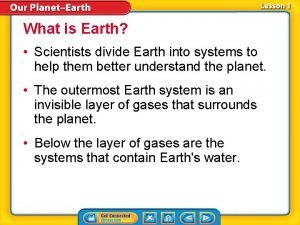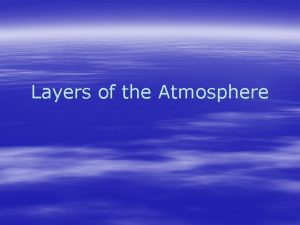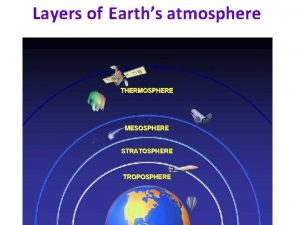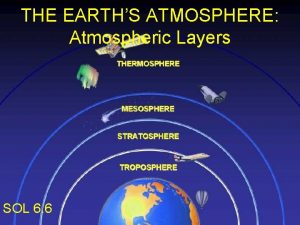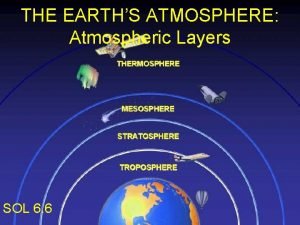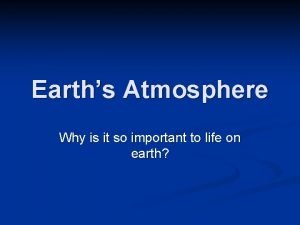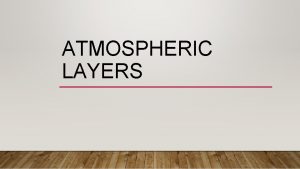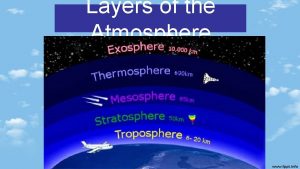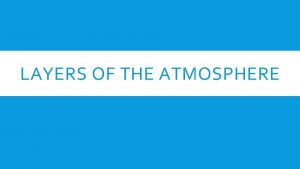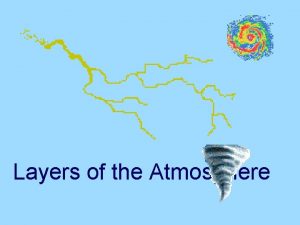ATMOSPHERE The atmosphere has 5 layers The Troposphere






- Slides: 6

ATMOSPHERE • The atmosphere has 5 layers. • The Troposphere is the layer nearest the Earth’s surface. • Electrically charged particles are found primarily in the ionosphere • The exosphere merges into outer space and is farthest from Earth’s surface. • Temperatures in thermosphere are very warm. • The stratosphere contains the ozone layer.

THE ATMOSPHERE, Continued • Oxygen makes up 21% of the atmosphere. • Nitrogen is the most common gas in air. • Ozone is usually found in the upper stratosphere. • Smog is formed when pollutants mix with oxygen in the presence of sunlight. • Water vapor makes up 0 -4% of the air in the atmosphere. • Water is the only substance that exists as a solid, liquid, and gas in Earth’s atmosphere.

HEATING • The transfer of energy through contact is conduction, and is how energy is transferred from land water to air. • Convection is the transfer of heat which causes differences in air density (cold sinks, heat rises); it is caused by the flow of a heated material like water or air. • Radiation is the transfer of energy through space by electromagnetic waves. • Radiation is also how energy is transferred from the Sun to Earth’s surface.

Heating of the Earth • Air in the troposphere (where we live) is warmed by heat from Earth’s surface. • Air above the equator is heated more than at any other place on Earth. • Wind patterns on Earth’s surface are created by differences in heating and the Coriolis effect (which is caused by Earth’s rotation). • Reflection and absorption by the atmosphere prevents some radiation from reaching earth’s surface.

WIND • The Doldrums are windless zones near the equator, where heat rises. • Prevailing Westerlies are responsible for the movement of much of the weather across the USA. • Steady winds between the Equator and 30 degrees latitude north and south are known as the trade winds. • Air currents that blow near the poles (north and south) are the polar easterlies. • Sea and land breezes happen because the land heats and cools more quickly than water.

Other Atmosphere Facts • In the water cycle, water evaporates from the surface of the Earth (lakes, rivers, oceans, etc. ) and condenses into clouds, then falls as precipitation. • Chlorofluorcarbons destroy the ozone layer by destroying ozone molecules. The ozone layer protects us from ultraviolet radiation. • Too much exposure to ultraviolet radiation cause skin cancer.
